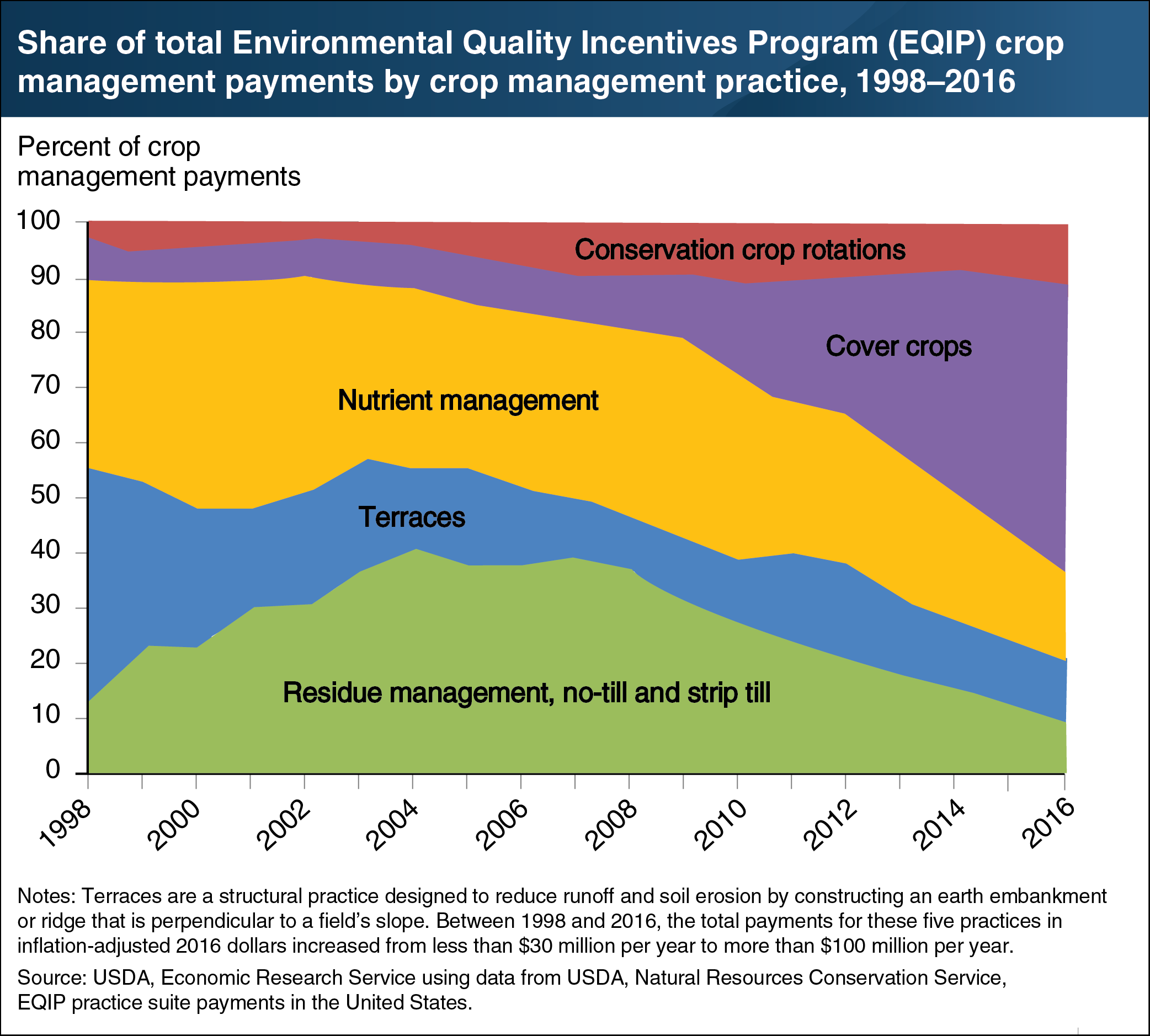Shifts in payments for the top five crop management practices in USDA’s Environmental Quality Incentives Program
- by Steven Wallander and Elizabeth Marshall
- 9/6/2019

USDA conservation programs provide nearly $6 billion annually for financial and technical assistance to support the adoption of conservation practices on U.S. farms. This conservation effort relies mainly on voluntary incentive programs. The largest single conservation program (in terms of budget) is the Conservation Reserve Program (CRP), which provides funding for the retirement of environmentally sensitive land. However, the largest share of conservation funding goes toward incentivizing conservation practices on lands that remain in production, or “working lands.” The Environmental Quality Incentives Program (EQIP) is one such program, which provides financial assistance to farmers who adopt or install conservation practices on land in agricultural production. EQIP expenditures for crop management practices focused on five categories of practices—conservation crop rotations, cover crops, nutrient management, terraces, and conservation tillage (residue management). Farmers who use cover crops grow a crop (often over the winter) that will be left in place as residue or incorporated into the soil to increase organic matter. Between 1998 and 2016, the share of EQIP expenditures going to nutrient management and terracing decreased, while the share of expenditures going to cover crops increased. This chart appears in the May 2019 ERS report Agricultural Resources and Environmental Indicators, 2019. Also see the August 2019 Amber Waves feature, “Conservation Trends in Agriculture Reflect Policy, Technology, and Other Factors.”

